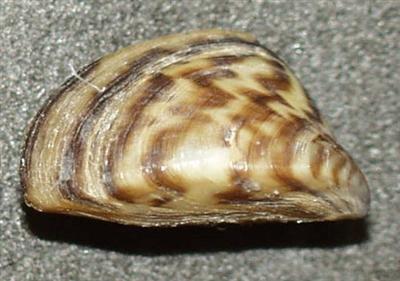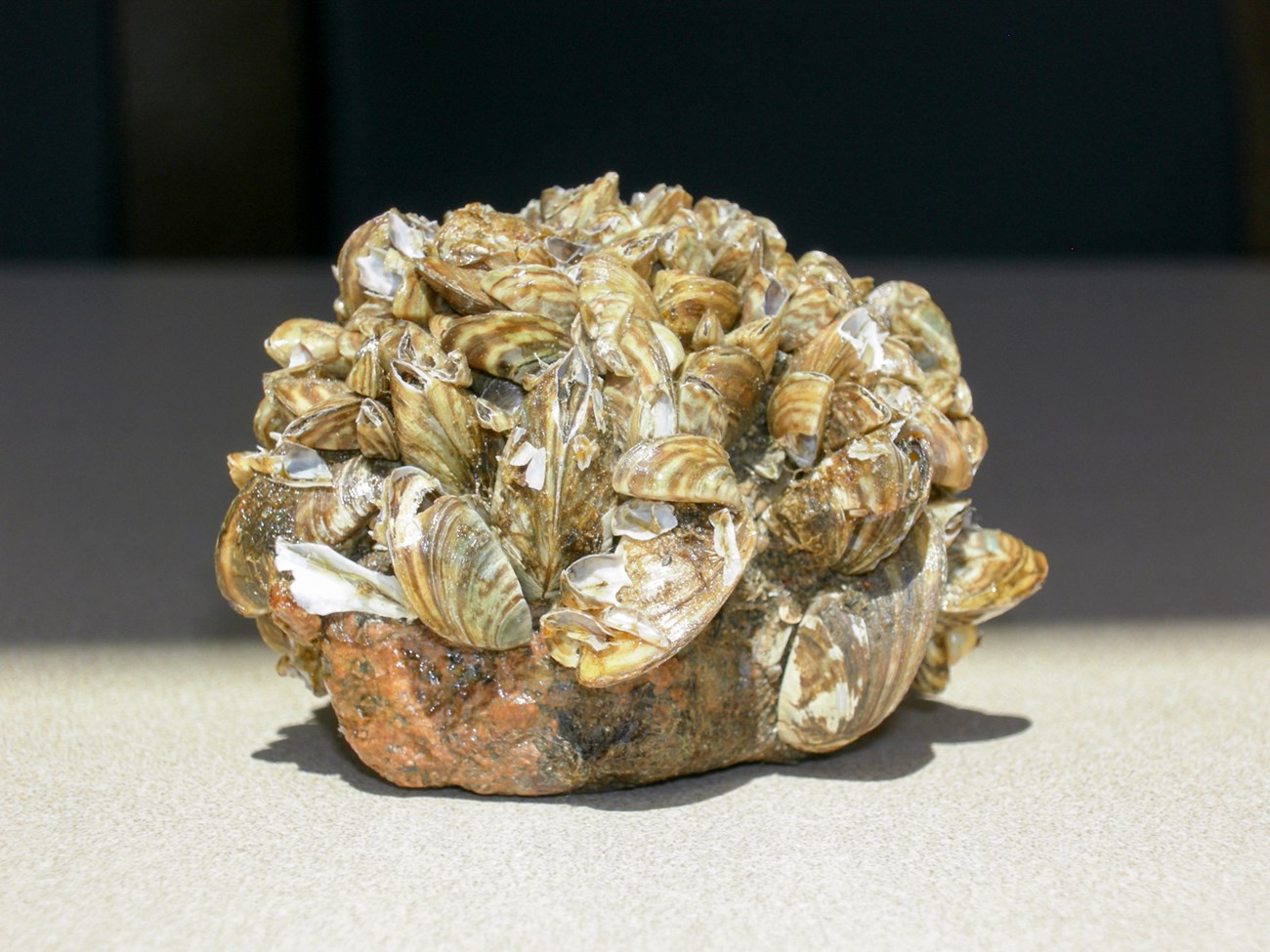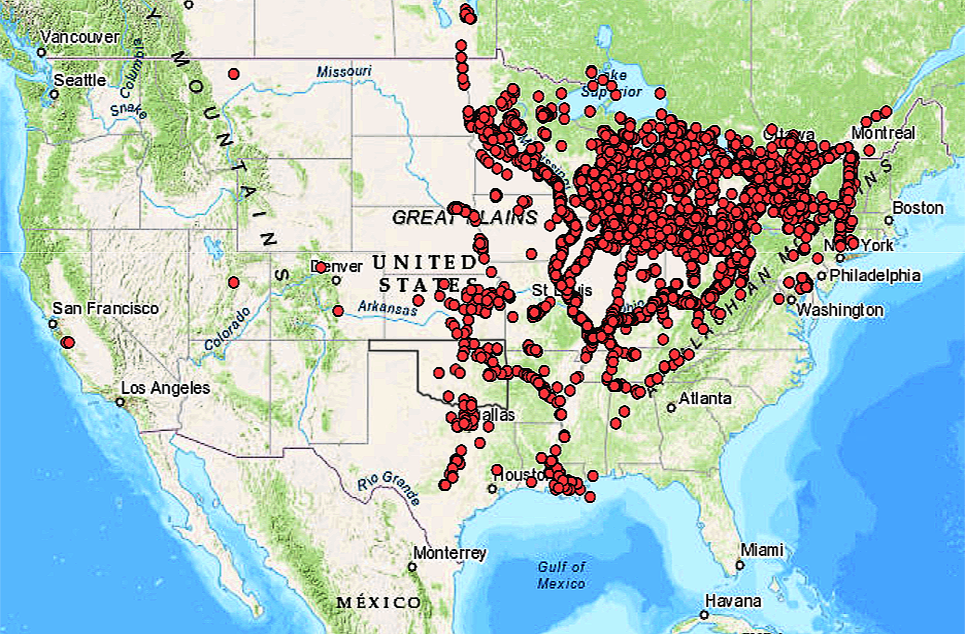Zebra mussels arrived in the United States through ballast water discharged by ships from Europe. They were first discovered in the Great Lakes in the late 1980s.
Zebra mussels are small, freshwater bivalve mollusks native to Eastern Europe and Western Russia. They pose a significant ecological threat due to their rapid reproduction and ability to attach to various surfaces. These invasive species clog water intake pipes, damage boats, and disrupt local ecosystems by outcompeting native species.
Since their introduction, zebra mussels have spread to numerous bodies of water across the United States. Effective management and prevention strategies are crucial to mitigate their impact on aquatic environments and infrastructure. Public awareness and adherence to watercraft cleaning protocols can help control their spread.

Credit: www.seagrant.wisc.edu
The Origin Of Zebra Mussels
Zebra mussels are small, freshwater mollusks. They are known for their striped shells. These mussels have caused problems in many water systems in the United States. Understanding their origin helps us manage their spread.
Native Habitat And Characteristics
Zebra mussels are native to Eastern Europe and Western Russia. They live in lakes, rivers, and streams. These mussels prefer slow-moving or still water. They attach themselves to hard surfaces like rocks, boats, and pipes.
They are called zebra mussels because of their striped shells. The stripes can be black, brown, or white. Each shell is unique in its pattern. Zebra mussels are small, usually about the size of a fingernail.
| Characteristic | Detail |
|---|---|
| Native Region | Eastern Europe, Western Russia |
| Habitat | Lakes, rivers, streams |
| Shell Appearance | Striped, black, brown, or white |
| Size | About the size of a fingernail |
Early Records In Europe
The first records of zebra mussels date back to the 18th century. Scientists found them in the Caspian and Black Sea regions. They noted their rapid spread in European waterways.
By the 19th century, zebra mussels had spread across Europe. They traveled through canals and rivers. Their ability to attach to boats helped them move quickly. These early records show how fast they can invade new areas.
- 18th century: First records in Caspian and Black Sea regions
- 19th century: Spread across Europe through canals and rivers
- Ability to attach to boats aided their spread
Pathways To America
The spread of zebra mussels to the United States is an intriguing story. They didn’t just appear out of nowhere. They traveled through specific pathways, impacting ecosystems and infrastructure.
Ballast Water: The Aquatic Highway
Ballast water is a major pathway for zebra mussels. Ships take in water to stabilize themselves during their voyages. This water often contains tiny organisms, including zebra mussels.
When ships reach their destination, they release this ballast water. This process releases zebra mussels into new environments. Once introduced, these mussels spread rapidly, causing significant ecological and economic harm.
International Trade And Aquaculture
International trade also plays a role. Goods transported across continents sometimes carry zebra mussels. They hitchhike on the surfaces of ships and cargo.
Aquaculture is another pathway. The farming of fish and shellfish sometimes involves moving equipment and water. These movements can unintentionally spread zebra mussels.
Both international trade and aquaculture contribute to the spread of zebra mussels. Their impact on ecosystems and industries is profound.
Initial Discovery In The Us
The initial discovery of Zebra Mussels in the United States marked a turning point in aquatic ecosystems. These small but invasive creatures quickly became a significant concern for scientists and environmentalists.
The Great Lakes: Ground Zero
The Great Lakes served as ground zero for the Zebra Mussel invasion. In 1988, they were first spotted in Lake St. Clair, which connects Lake Huron and Lake Erie. This discovery raised alarms due to the potential ecological impact.
Zebra Mussels likely arrived through ballast water discharged by ships. These mussels are native to the Black and Caspian Seas in Eastern Europe. The Great Lakes provided the perfect habitat for them to thrive.
The spread of Zebra Mussels in the Great Lakes was rapid. Within a few years, they colonized all five lakes. The infestation caused severe disruptions in local ecosystems and water infrastructure.
Response To The First Sightings
The response to the first sightings of Zebra Mussels was swift. Authorities and scientists launched immediate research and containment efforts.
Research teams conducted studies to understand the mussels’ impact. They examined how these invasive species affected local wildlife and water quality.
Containment measures were put in place to slow their spread. Boaters were educated on how to clean their vessels to prevent further contamination.
A multi-agency task force was established to tackle the issue. This task force included representatives from environmental organizations, government agencies, and local communities.
Funding was allocated for ongoing research and mitigation projects. These efforts aimed to find long-term solutions to manage the infestation.
Despite these efforts, the challenge remains daunting. Zebra Mussels continue to pose a threat to water systems and native species.

Credit: www.nps.gov
Spread Across The Country
The spread of zebra mussels across the United States has been rapid and alarming. These tiny invaders have reached numerous water bodies, causing ecological and economic issues. Let’s explore how they navigated inland waterways and how human activities played a role.
Navigating Inland WaterwaysZebra mussels first appeared in the Great Lakes. They then spread to other water bodies. They moved through rivers and canals. Their small size made it easy for them to travel. They attached to boats and ships. This helped them move long distances quickly.
Water currents also played a role. Zebra mussels can survive in various conditions. This adaptability allowed them to thrive in new environments. As they spread, they attached to new surfaces. They clogged water pipes and disrupted ecosystems.
Human Activities and Their RoleHuman activities significantly aided the spread of zebra mussels. Boaters often unintentionally transported them. They attached to boat hulls and anchors. This allowed them to invade new water bodies. Fishing equipment also carried zebra mussels. They stuck to nets and traps.
Commercial shipping was another factor. Large ships carried zebra mussels in ballast water. When ships released this water, zebra mussels spread. Recreational activities also played a part. Swimmers and divers unknowingly moved them. Zebra mussels clung to gear and clothing.
Human activities like these have accelerated their spread. They have reached nearly every major waterway in the country. Awareness and prevention are crucial. We must stop their further spread.
Impact On Ecosystems And Economy
Zebra mussels arrived in the United States in the late 1980s. They have since caused significant ecological and economic damage. Their presence affects water bodies and industrial infrastructure. Below, we explore their environmental and economic impacts.
Environmental Consequences
Zebra mussels filter large amounts of plankton. This reduces food for native fish and aquatic species. Their presence disrupts the natural balance in ecosystems. They attach to surfaces, harming native mussel populations.
Zebra mussels also increase water clarity. This might seem good, but it allows sunlight to penetrate deeper. This leads to the growth of unwanted algae and aquatic plants. These changes can alter habitats and affect local wildlife.
Costs To Industry And Management Efforts
Zebra mussels clog water intake pipes. This affects power plants, water treatment facilities, and other industries. The cost of cleaning and maintenance increases. According to a study, industries spend millions annually on zebra mussel control.
Management efforts include chemical treatments and manual removal. These methods are costly and labor-intensive. Efforts also focus on preventing their spread to new areas. Public education campaigns and regulations are part of these efforts.
| Impact | Description | Cost |
|---|---|---|
| Clogging Pipes | Zebra mussels block water intake systems | Millions annually |
| Ecological Damage | Disrupts food chains and native species | Irreparable |
| Management Efforts | Chemical and manual removal | High |
Efforts to control zebra mussels are ongoing. The aim is to reduce their impact and prevent further spread.

Credit: www.wildlifedepartment.com
Conclusion
Zebra mussels arrived in the United States through ballast water from ships. Their rapid spread causes significant environmental damage. Understanding their journey helps in creating effective control measures. Protecting our waters from invasive species is crucial. Stay informed and support conservation efforts to safeguard native ecosystems.
Together, we can make a difference.
